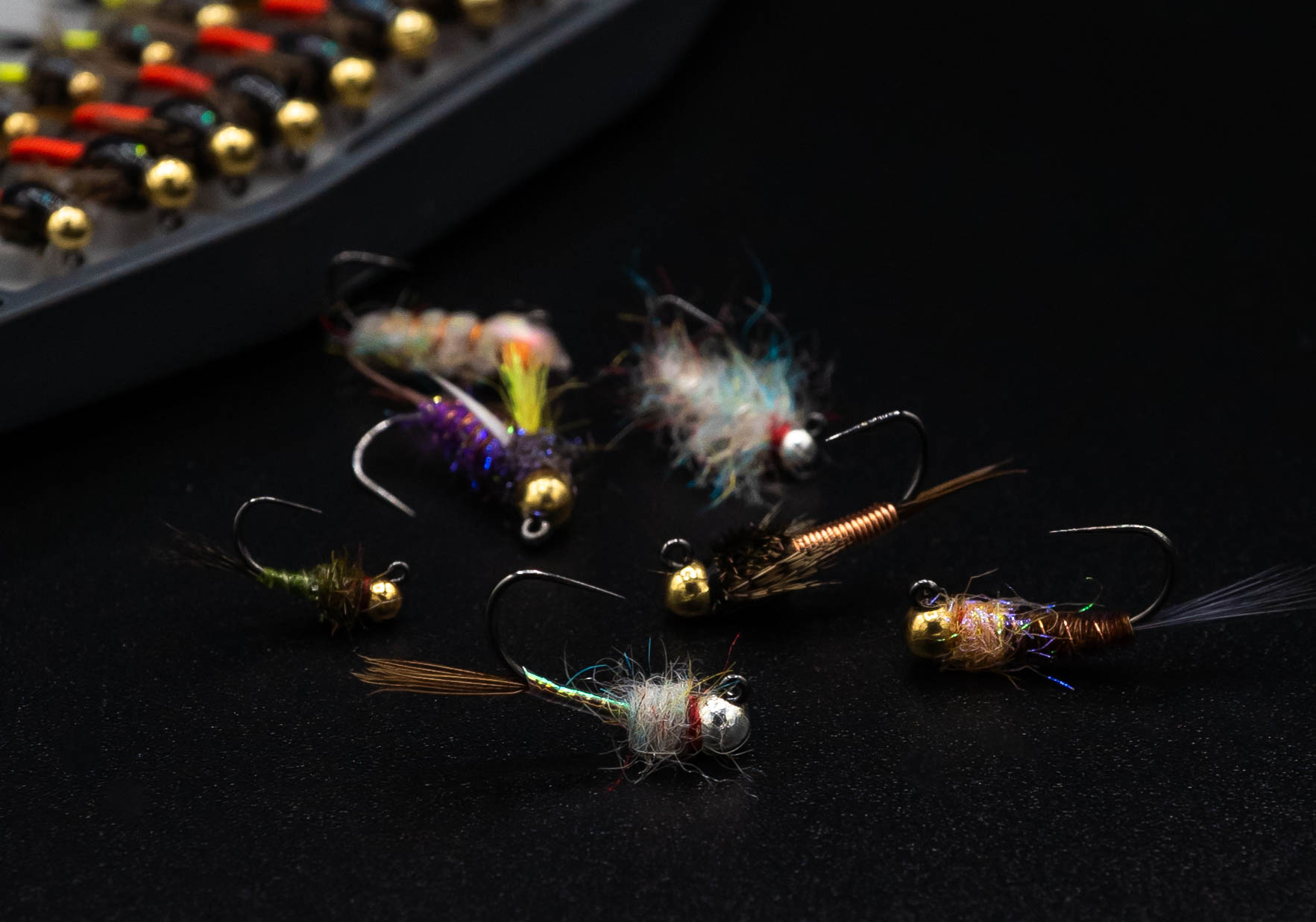
Why Jig Hooks?
Jigs have been an important part of conventional fishing for many years and their effectiveness is well known in both fresh and saltwater situations. In fly fishing, use of jigs is relatively new. The first jig hooks I remember seeing used for fly fishing were streamers tied on 90 degree jigs with cones and dumbbell eyes for the weight. Next up were balanced leech patterns where 90 degree jig hooks are teamed with a sewing pin and a tungsten bead to change the balance at the tie in point of the fly. Following balanced jig hooks were competition barbless jig hooks. I was introduced to barbless 60 degree jig hooks at the 2006 World Fly Fishing Championships in Portugal. You could only find these hooks from small European companies, Umpqua was the first US company to introduce a fly fishing specific jig hook to the US market. Their introduction was critical to making these hook styles part of the fly fishing mainstream.

Advantages of jig hooks
I’m often asked if it’s okay to substitute a standard nymph hook for a pattern that is commercially available on a jig hook. While this is certainly an option, I think the advantages of the jig hook make it the superior option. The pluses are many:
Less snagging
Because jigs ride with the hook point up they are less prone to snagging the river bottom. This also aids in keeping the hook point safe from damage since it’s less likely to contact rocks and such.
Improved hook penetration and fish holding
Barbless hooks are easier to get set into a fish because they lack the ramp or bump created by the barb. A barbed hook makes a larger hole in the fish and requires more power to penetrate past the barb. Barbless jig hooks often feature a long point (spear) for better penetration and fish holding power. Also, of note, Trout have less bone near the roof and corner of their mouth compared to the bony bottom jaw. Jig hooks tend to hook Trout in the top or corner of the mouth and as such you land more fish with jigged nymphs.
More weight options
Competition style barbless jig hooks work best with slotted Tungsten beads. An often-overlooked feature of jig hooks is their potential to fit a range of bead sizes on each hook size. With standard nymph hooks you can usually only fit 1 or 2 different bead sizes on the same hook. If you add a larger bead the hook gap will be too crowded which makes hooking and retaining fish nearly impossible. Because of the recessed way slotted beads sit on a jig hook there is more room to accommodate a broader range of bead sizes. For example, I often tie a size 14 Red Dart with 2.3, 2.8, 3.3, and even 3.8mm slotted tungsten beads. This variety of bead sizes allows me to have the same size 14 fly in several weights. This is particularly important when Euro-nymphing but is also handy when fishing a dry/dropper rig.
Better for the fish and you
Barbless hooks are much better for the fish since they are less damaging and easier to remove. This is also true when we accidentally hook ourselves, a guide, or fellow angler.
Again, because of the jig hooks tendency to grab fish by the upper lip, barbless jig hooks are usually easier to quickly pop out of a fish, reducing handling time, which amounts to safer, less stressful releases.
If you haven’t already, add some barbless jig hooks to your fly selection. I’m confident you'll quickly recognize the advantages and will look for opportunities to fill you boxes with these fish catching hook designs.
–Signature Tyer Lance Egan
